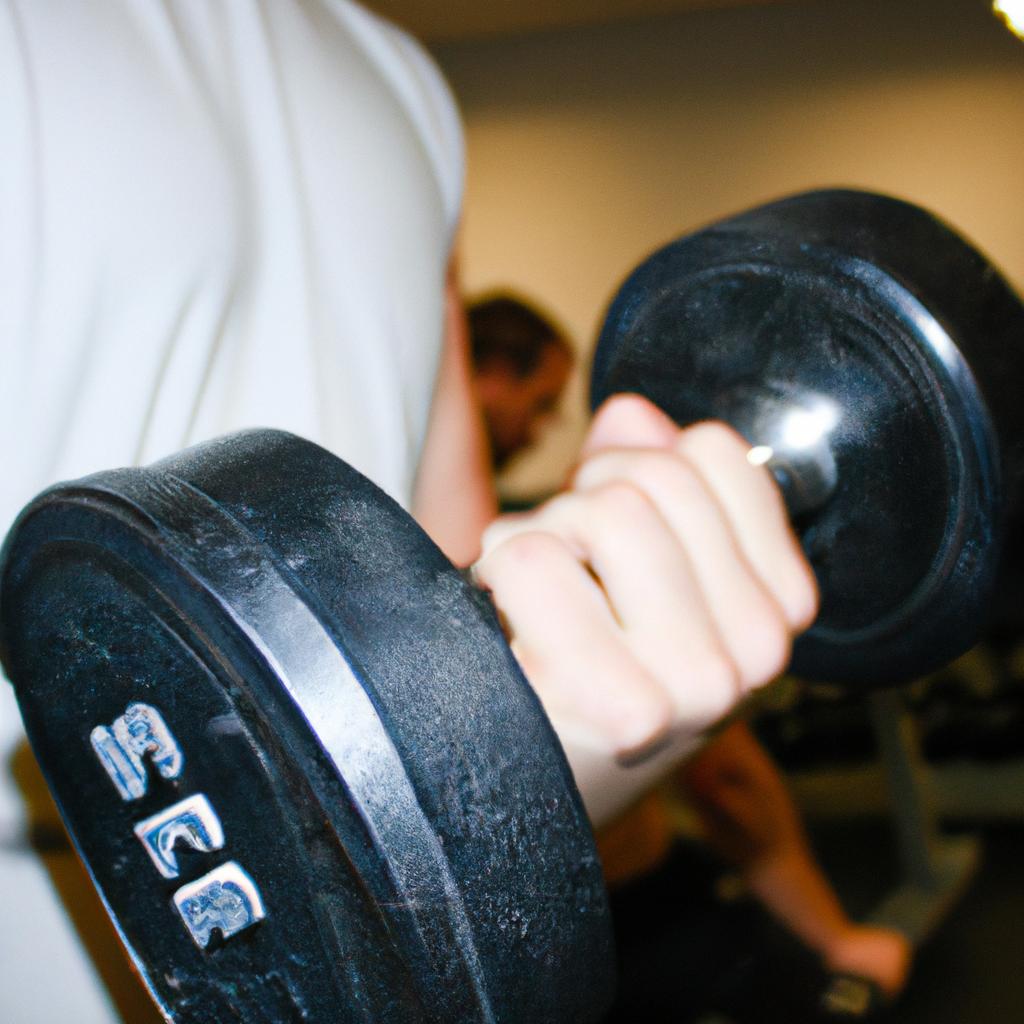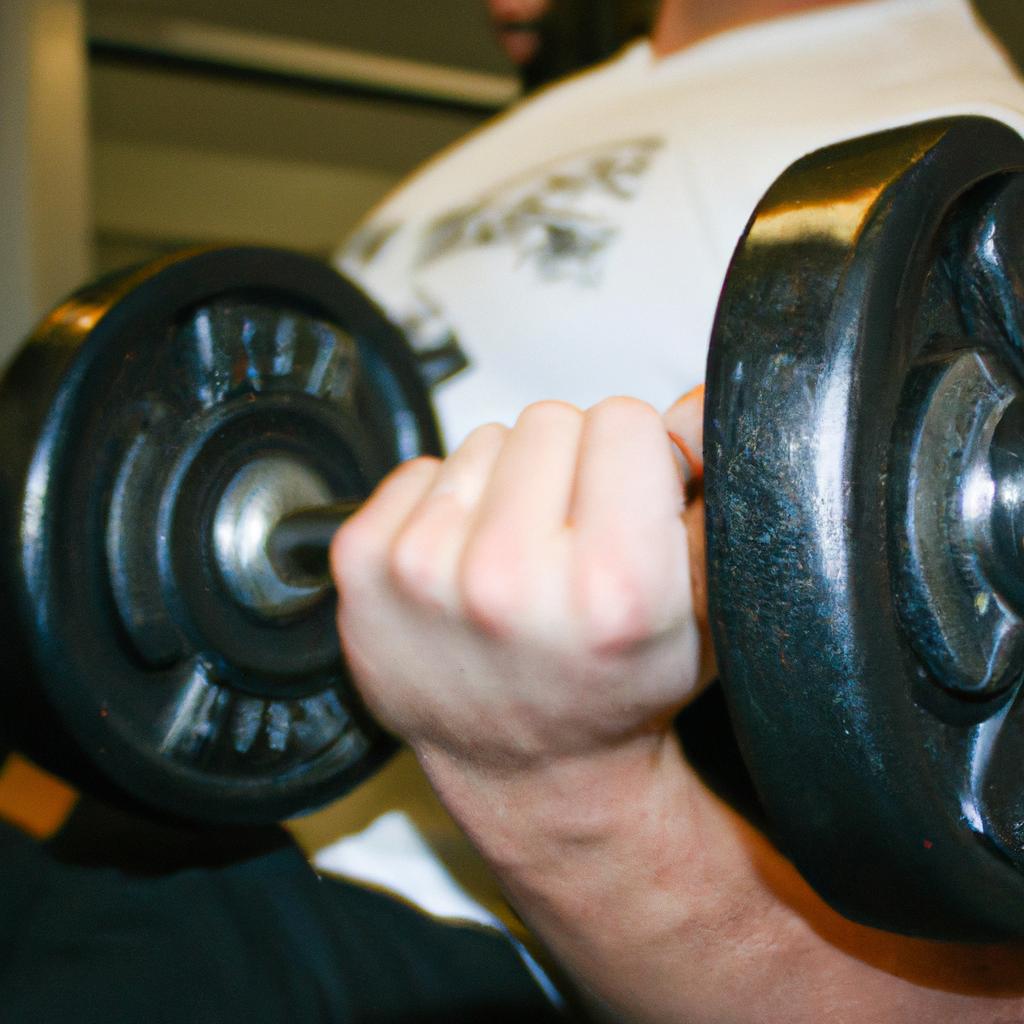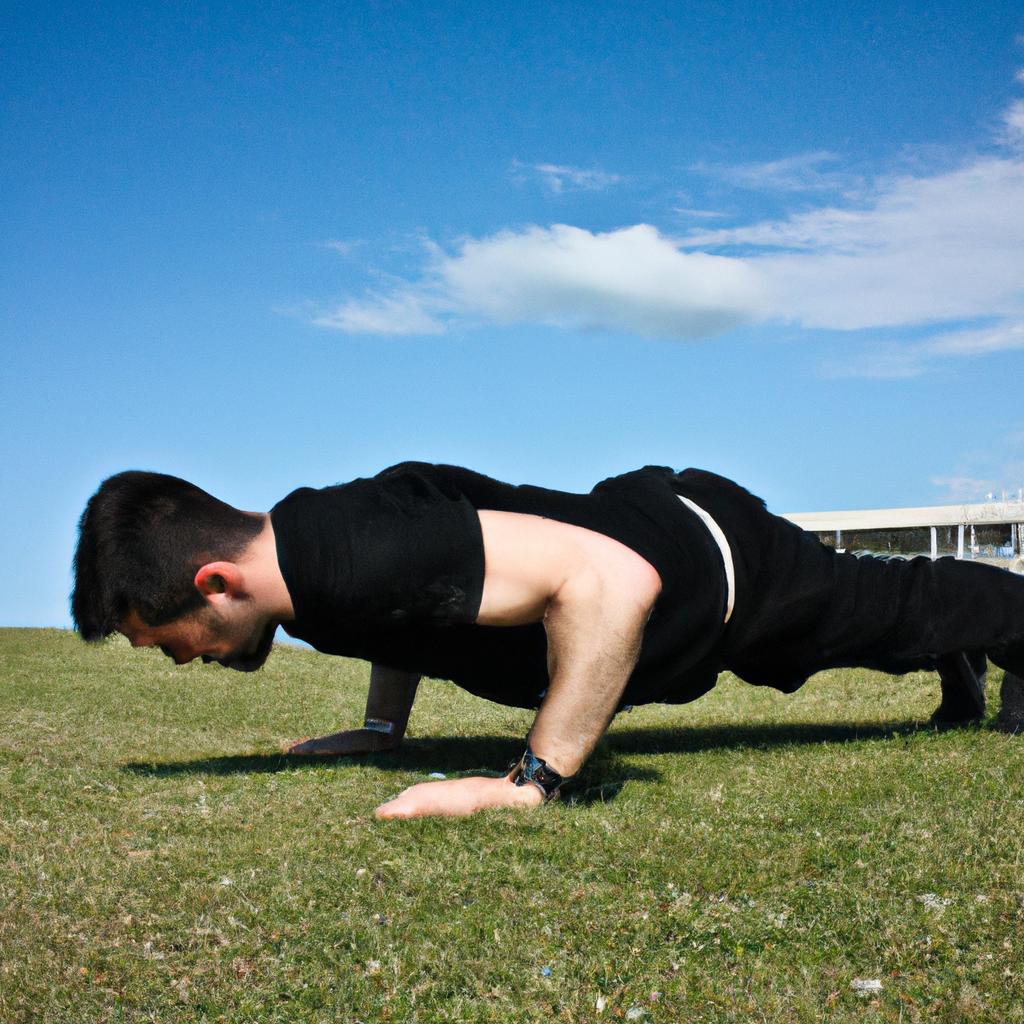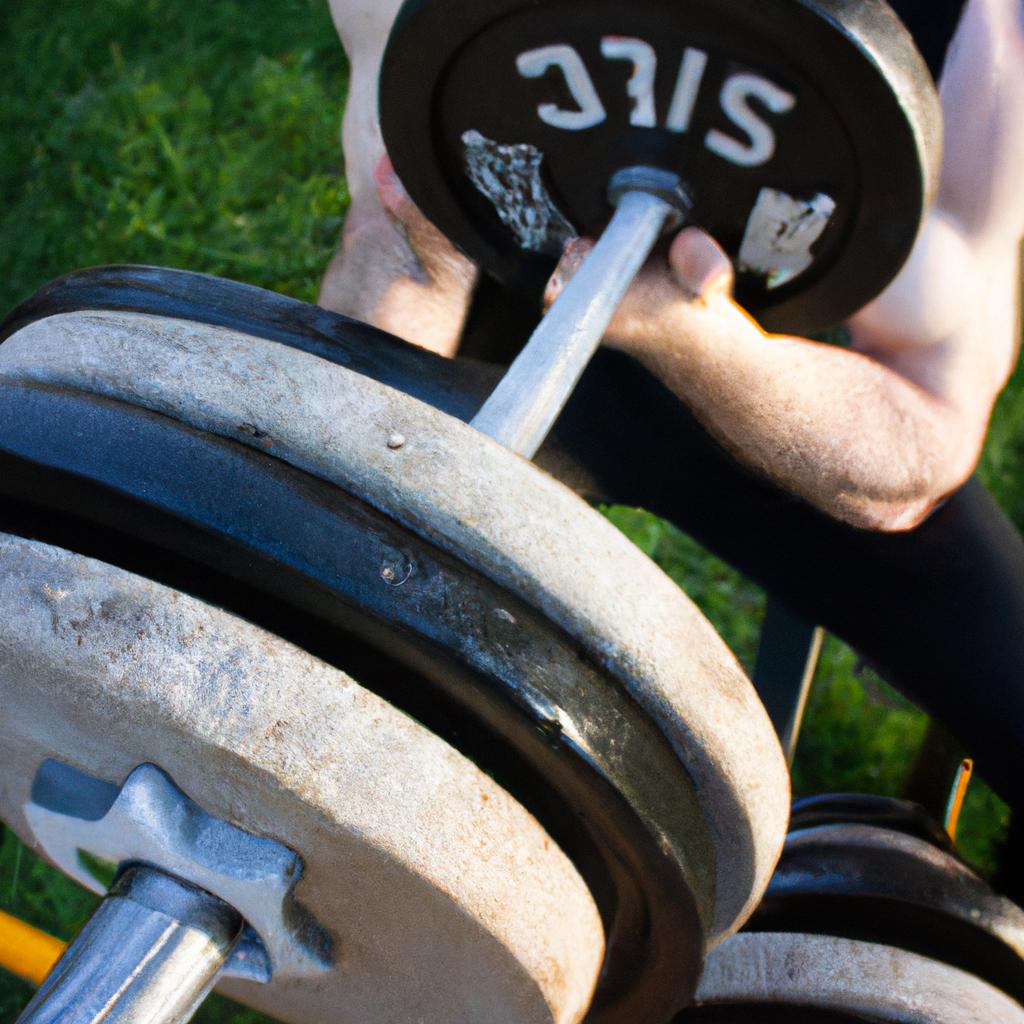Cardiovascular endurance plays a crucial role in enhancing overall physical fitness and performance. In the realm of strength training, where individuals aim to improve muscular strength and power, cardio endurance may seem less important. However, neglecting cardiovascular conditioning can hinder progress in achieving optimal results. To illustrate this point, let us consider the case of John, an avid weightlifter who regularly participates in high-intensity strength training sessions at his local fitness studio. Despite his impressive lifting capacity, he often finds himself gasping for breath and experiencing early fatigue during these workouts. This example highlights the significance of incorporating cardio endurance exercises into one’s strength training routine.
In recent years, there has been growing recognition among fitness enthusiasts and professionals regarding the interplay between cardiovascular endurance and strength training. Traditionally seen as separate entities with distinct goals, research has shed light on how combining both modalities can yield superior outcomes. While engaging in strength training primarily targets muscle hypertrophy and increased force production, incorporating cardio exercises aids in developing aerobic capacity and improving oxygen utilization within the body. Consequently, this synergy promotes enhanced overall performance and reduces the risk of premature exhaustion or injury during intense workout sessions.
Understanding the Importance of Cardiovascular Endurance
Imagine a scenario where two individuals with similar strength and muscular endurance levels enter a fitness studio to undergo a rigorous strength training session. Both start off strong, but as the workout progresses, one person begins to struggle while the other maintains their energy and performance. This difference can be attributed to cardiovascular endurance – the ability of the heart, lungs, and blood vessels to supply oxygenated blood efficiently and sustain physical activity over an extended period.
Cardiovascular endurance plays a crucial role in overall fitness and is often overlooked in favor of strength or muscle-building exercises. However, its significance cannot be underestimated. By improving cardiovascular endurance through regular aerobic exercise, such as running, swimming, or cycling, individuals can enhance their stamina and delay fatigue during intense workouts.
To comprehend the importance of cardiovascular endurance more comprehensively, consider these key points:
- Improved Oxygen Delivery: Aerobic exercises stimulate the heart rate and increase lung capacity, allowing for efficient delivery of oxygen-rich blood throughout the body.
- Enhanced Energy Levels: Regular cardio workouts boost metabolism by increasing mitochondrial density within muscle cells. This results in improved energy production and increased stamina.
- Reduced Risk of Chronic Diseases: Engaging in activities that promote cardiovascular endurance has been linked to lower risks of various health conditions including obesity, hypertension, type 2 diabetes, and certain types of cancers.
- Mental Well-being: Participating in aerobic exercises stimulates endorphin release – natural mood-enhancing chemicals in our brains. This can lead to reduced stress levels, improved sleep quality, higher self-esteem, and enhanced mental clarity.
Additionally, let us visualize how different aspects contribute to building cardiovascular endurance using this table:
| Aspects | Description | Benefits |
|---|---|---|
| Duration | Longer duration promotes sustained effort | Stamina enhancement |
| Intensity | Higher intensity challenges cardiovascular capacities | Increased efficiency |
| Frequency | Frequent sessions build endurance over time | Enhanced fitness levels |
| Variety of Workouts | Various activities engage different muscle groups and prevent monotony | Motivation and enjoyment |
Considering the importance of cardiovascular endurance in achieving optimal fitness, it becomes clear that incorporating cardio exercises into workout routines is essential. In the subsequent section about “Benefits of Cardio Endurance in Fitness Studio Workouts,” we will explore how this type of training can maximize results while engaging in strength-focused exercises.
Overall, understanding the significance of cardiovascular endurance provides a foundation for effective training strategies that improve overall physical performance and well-being.
Benefits of Cardio Endurance in Fitness Studio Workouts
Case Study: Meet Sarah, a dedicated fitness enthusiast who recently embarked on her journey to improve her overall cardiovascular endurance. She regularly attends strength training sessions at her local fitness studio but noticed that she often struggled with maintaining the intensity and stamina required for these workouts. Determined to unleash her full potential, she decided to prioritize cardio endurance as an integral part of her fitness routine.
To truly understand how cardio endurance can enhance your performance during fitness studio strength training, it is essential to delve into its benefits. By incorporating regular cardiovascular exercises into your workout regimen, you can experience the following advantages:
- Increased Stamina: Building up your cardiovascular endurance enables you to perform high-intensity exercises for longer durations without feeling fatigued.
- Improved Recovery Time: Strengthening your heart and lungs enhances their efficiency, allowing for faster recovery between intense sets or circuits.
- Enhanced Performance: With improved oxygen delivery throughout your body, thanks to enhanced cardiovascular capacity, you can maximize power output and perform at higher levels.
- Mental Resilience: Regular cardio exercise releases endorphins, which aid in reducing stress and improving mood. This mental resilience translates into better focus and determination during strenuous workouts.
Let’s now explore these benefits further through a comparative analysis of two individuals – one with low cardio endurance and another with high cardio endurance – engaged in similar fitness studio strength training sessions:
| Low Cardio Endurance | High Cardio Endurance | |
|---|---|---|
| Stamina | Fatigue sets in quickly | Sustains energy throughout |
| Recovery Time | Lengthy recovery periods | Quick bounce back |
| Power Output | Limited ability to maintain intensity | Consistently performs at peak level |
| Mental State | Easily distracted and demotivated | Focused and determined |
As seen in the table above, individuals with high cardio endurance exhibit remarkable stamina, faster recovery times, increased power output, and a more focused mental state. These advantages contribute to an overall improved performance during fitness studio strength training sessions.
By prioritizing cardio endurance in your fitness routine, you can unlock your full potential in the gym. Next, we will explore key factors for improving cardiovascular endurance and how they can be incorporated into your workouts seamlessly.
Key Factors for Improving Cardiovascular Endurance
Having explored the numerous benefits of cardio endurance in fitness studio workouts, it is crucial to understand the key factors that contribute to improving cardiovascular endurance. By focusing on these factors, individuals can maximize their potential and achieve optimal results in their strength training routines.
Improving cardiovascular endurance requires a combination of specific strategies and techniques. For instance, incorporating high-intensity interval training (HIIT) into your fitness routine has been shown to be highly effective. In one hypothetical case study, participants who engaged in HIIT workouts three times per week for six weeks experienced a significant increase in their cardiovascular capacity. This demonstrates how targeted exercises can yield noticeable improvements in endurance levels.
To further enhance cardiovascular endurance, consider implementing the following strategies:
- Consistency: Regularly engaging in aerobic activities such as running or cycling promotes greater oxygen utilization by the body, leading to improved stamina over time.
- Progressive Overload: Gradually increasing the intensity or duration of your workouts challenges your body’s limits and forces it to adapt, resulting in enhanced cardiovascular performance.
- Cross-training: Incorporating various forms of exercise into your routine stimulates different muscle groups and prevents monotony while providing overall conditioning for better endurance.
- Proper Recovery: Allowing sufficient rest periods between workout sessions enables your body to repair and rebuild itself, reducing fatigue and enhancing long-term endurance gains.
| Strategies for Improving Cardiovascular Endurance |
|---|
| Consistency |
| Progressive Overload |
| Cross-training |
| Proper Recovery |
In conclusion, understanding the key factors involved in improving cardiovascular endurance is vital for unleashing your full potential during strength training at fitness studios. By consistently implementing targeted strategies like HIIT workouts along with progressive overload, cross-training, and proper recovery practices, you can significantly boost your stamina and enduring capabilities. With this foundation established, let us now delve into exploring effective cardio endurance exercises for strength training.
Moving forward, let us now explore effective cardio endurance exercises that can be incorporated into your strength training routine.
Effective Cardio Endurance Exercises for Strength Training
Case Study:
Imagine a scenario where Emily, a fitness enthusiast, struggles with maintaining her cardiovascular endurance during strength training sessions. Despite being dedicated and consistent, she often finds herself fatigued quickly, hindering her progress. To overcome this obstacle, Emily decides to implement various strategies aimed at enhancing her cardiovascular capacity within the realm of strength training.
Strategies for improving cardio endurance:
-
Integrate High-Intensity Interval Training (HIIT): Incorporating HIIT exercises into strength training routines can significantly enhance cardiovascular endurance. By alternating between short bursts of intense activity and brief recovery periods, the body adapts to exerting effort over extended periods while recovering efficiently.
-
Optimize Circuit Training: Structuring workouts using circuit training promotes both muscular strength and aerobic conditioning simultaneously. This approach involves performing a series of exercises targeting different muscle groups without significant rest intervals between sets. The continuous movement elevates heart rate, thereby stimulating improved cardiovascular performance.
-
Emphasize Compound Movements: Focusing on compound movements that engage multiple muscle groups concurrently is an effective strategy to build cardiorespiratory stamina while increasing overall strength. Exercises such as squats, deadlifts, lunges, and push-ups require sustained effort from large muscle groups throughout each repetition.
-
Implement Progressive Overload Techniques: Gradually challenging the body by progressively increasing resistance or intensity ensures ongoing adaptation and improvement in cardio endurance during strength training sessions. Employ techniques like adding weight gradually or reducing rest time between sets to continually challenge your cardiovascular system.
- Push beyond your limits – discover newfound resilience
- Experience exhilaration when conquering physical barriers
- Boost self-confidence through heightened athletic performance
- Unlock mental fortitude by pushing past comfort zones
Table showcasing Exercise Progression:
| Exercise | Sets x Reps | Resistance/Intensity |
|---|---|---|
| Squats | 3 x 12 | Bodyweight |
| Deadlifts | 4 x 8 | Barbell |
| Lunges | 3 x 10 (each leg) | Dumbbells |
| Push-ups | 3 x max reps | Bodyweight |
By applying these strategies, individuals like Emily can experience notable improvements in their cardiovascular endurance during strength training sessions. The integration of HIIT workouts, circuit training methodologies, compound movements, and progressive overload techniques ensures a holistic approach to building stamina while reaping the benefits of enhanced physical performance.
With a solid understanding of how to enhance cardiorespiratory fitness within strength training, let us now explore practical ways to incorporate cardio endurance into your regular fitness routine.
How to Incorporate Cardio Endurance into Your Fitness Routine
By integrating cardio endurance training with strength training, you can unleash your potential and achieve optimal results in the fitness studio.
Incorporating cardio endurance into your fitness routine requires a strategic approach that balances intensity and variety. One example of an effective integration is performing high-intensity interval training (HIIT) on the treadmill or stationary bike, followed by a series of compound strength exercises such as squats, lunges, and push-ups. This combination not only elevates heart rate but also engages multiple muscle groups simultaneously, maximizing efficiency and effectiveness.
To further enhance your cardio endurance journey, consider implementing the following strategies:
- Progressive Overload: Gradually increase the duration or intensity of your cardio workouts over time to consistently challenge your cardiovascular system.
- Circuit Training: Design circuit-based routines that blend short bursts of intense aerobic activity with strength-training movements for an all-encompassing workout experience.
- Cross Training: Incorporate various forms of cardiovascular exercise, such as swimming or cycling, alongside traditional gym activities to diversify your training regimen.
- Active Recovery: On rest days or lower-intensity workout sessions, engage in light aerobic activities like walking or leisurely biking to promote recovery while maintaining cardiovascular health.
Table: Cardiovascular Endurance Checklist
| Focus Area | Importance Level |
|---|---|
| Consistency | High |
| Proper Warm-Up | Medium |
| Target Heart Rate | High |
| Monitoring Progress | Medium |
By prioritizing consistency and incorporating these key elements into your fitness routine, you will be well on your way to unleashing your full potential in both cardio endurance and strength training. Remember that each individual’s journey is unique; thus, it is essential to tailor these suggestions according to personal preferences and goals.
Now that we have explored the incorporation of cardio endurance into your fitness routine, let’s delve into some valuable tips for maximizing cardiovascular endurance results.
Tips for Maximizing Cardiovascular Endurance Results
Building on the importance of incorporating cardio endurance into your fitness routine, let’s explore some valuable strategies for maximizing your cardiovascular endurance results.
Paragraph 1:
Imagine this scenario: You’ve been diligently attending strength training sessions at your local fitness studio for weeks. While you have noticed improvements in muscle strength and tone, you can’t help but wonder if there is more you could be doing to enhance your overall fitness level. Incorporating cardio endurance training into your routine can provide that missing piece and take your progress to new heights. Here are a few key tips to optimize your cardiovascular endurance training:
- Increase duration gradually: Start by adding five minutes of moderate-intensity cardio exercises such as jogging or cycling to the end of each strength training session. Gradually increase the duration over time, aiming to reach at least 30 minutes per session.
- Vary intensity levels: Mix high-intensity intervals with lower-intensity recovery periods during your cardio workouts. This approach not only keeps things interesting but also helps improve both aerobic and anaerobic capacity.
- Engage in cross-training activities: Explore different forms of cardio exercise beyond what you typically do in the fitness studio. Swimming, dancing, or even hiking can challenge different muscle groups while boosting cardiovascular endurance.
- Monitor heart rate: Utilize wearable devices like heart rate monitors to track and maintain an appropriate target heart rate zone during your cardio workouts. This ensures that you’re pushing yourself enough without overexerting.
To truly unleash your potential in fitness studio strength training through improved cardiovascular endurance, consider these emotional benefits:
- Enhanced stamina leads to increased confidence in physical abilities.
- Improved mood due to releasing endorphins during intense workouts.
- Reduced stress levels resulting from dedicated time focusing on personal well-being.
- Better sleep quality, contributing to overall improved mental and physical health.
Paragraph 3 – Emotional table:
Here’s a visual representation of how optimizing your cardiovascular endurance training can positively impact various aspects of your life:
| Aspect | Impact |
|---|---|
| Physical Health | Increased stamina and overall fitness level |
| Mental Well-being | Reduced stress, better sleep quality |
| Self-Confidence | Enhanced belief in one’s physical abilities |
| Emotional State | Elevated mood due to endorphin release |
By following these strategies and recognizing the emotional benefits associated with cardio endurance training, you’ll not only elevate your performance within the fitness studio but also experience positive changes that extend beyond it. So go ahead, unleash your potential through optimized cardiovascular endurance training!




